The Unicorn Project
by Gene Kim

Boring. But let's start with good parts. I like how the second book looks at The Phoenix Project from another perspective. There can't be a more seamless way to connect the books. While the first book was about devops, the second is about developers. I enjoyed the part at the end when they were monitoring and fixing bugs in production. The chapter had a good pace and holds suspension to the end.
Unfortunately the second book is polluted with unnecessary details. Feels like the author wanted to show off how many cool words he knows.
The only educational part, Five Ideals, are almost forgotten as soon as they are introduced. The main character already knows it. While the story itself serves as their demonstration, ideals are detached from the reader.
The story line is turned into extremes. The main character is flawless god-like creature, while others are the most incompetent people in the world.
My favourite funny moment is when developers decided to use new technology, which they never used before. Without any experience the decision was to use it straight in production while burning bridges to the previous implementation. Unfortunately such reckless behaviour is delivered like a hero moment. It's like a surgeon decides to transplant the heart on a live patient without any experience or knowledge. 🤦♀️
In summary the book has great intentions but they are poorly delivered. Skip this book, it's not worth your time.
Chess not checkers
by Mark Miller
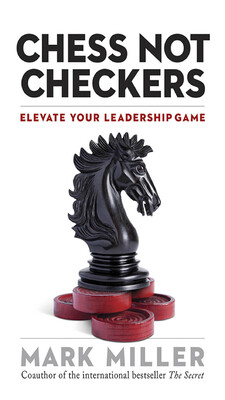
The book offers a short and entertaining story about the new CEO. It's almost identical to The Phoenix Project book in composition and story line. The story walks through the 4 guides for the organisation leadership. It's an easy read and you can finish it in a couple of hours, so I would recommend it on this basis.
I enjoyed Chess not checkers. I wish it was longer with more lessons in it, so there is more to enjoy.
The Little Book of Common Sense Investing: The Only Way to Guarantee Your Fair Share of Stock Market Returns
by John C. Bogle
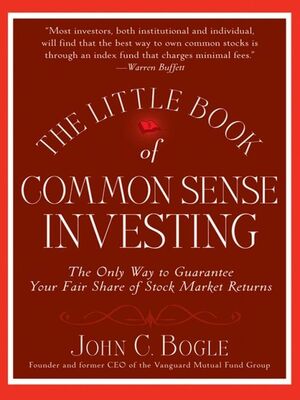
Barefoot Investor recommended this book. It is written by John Bogle who founded Vanguard Mutual Fund Group. If you don't know, Vanguard is the largest provider of mutual funds and the second-largest provider of exchange-traded funds in the world.
I found the book very dry to read, however, it has plenty of research data. The book requires a good understanding of different investment schemes to fully appreciate it. Unfortunately I could only grasp the core message: invest in index funds. They provide the best diversification and with lowest fees it's almost impossible to beat them.
That's only applicable to long term investments though. By following the mentioned advice, it should put you above the majority with minimum cost and effort. I agree with Barefoot Investor, this book is a must read for all stocks investors.
Few quotes:
In the short run the stock market is a voting machine . . . (but) in the long run it is a weighing machine.
-- Ben Graham
When there are multiple solutions to a problem, choose the simplest one.
-- Occam’s Razor
Common sense tells us that performance comes and goes, but costs go on forever.
"The greatest enemy of a good plan is the dream of a perfect plan.” Stick to the good plan.
The two greatest enemies of the equity fund investor are expenses and emotions.
Resilient Management
by Lara Hogan

This book gives good introduction to management. It gives exposure to the few concepts and frameworks. While it's very short and narrow, it's enough so you can continue learning by researching the mentioned references.
Looks like the book is primarily based on Lara's experience with a sprinkle of research. The advices she gives are very specific and practical. I wish the book included more details about stages of group development. While Lara used it as a thread that connects all chapters, but it definitely could have a stronger presence.
The strongest chapter is about growing your teammates through mentoring, coaching, sponsoring and feedback. I found it very insightful and valuable.
Considering how under-skilled the managers I've met in my career, I think the book is a good fit for the majority. I'm yet to see a comprehensive management book, so I would recommend Resilient Management to at least junior to mid managers.
Atomic Habits: An Easy & Proven Way to Build Good Habits & Break Bad Ones
by James Clear

Great book! Good structure, practical content, easy to read. The book offers a systematic approach to dealing with habits and not relying on will power.
Joy Inc. How We Built a Workplace People Love
by Richard Sheridan
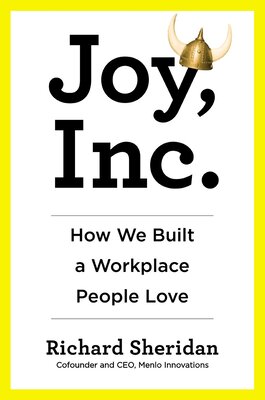
This book is a simple description how fairly successful consultancy company called Menlo works. The book is obviously promoting their process and culture, but it’s not encouraging you to follow it. That makes it smooth to read and allows you to make your own conclusion.
Menlo is a consultancy and not a product company. That defines their culture and processes. Looks like a lot of processes were solidified when the company was founded in 2000s. Nothing wrong with that, it just feels dated at times.
Below are my highlights and comments
Do the work
by Steven Pressfield
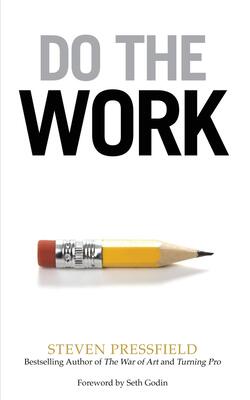
This is short (2 hours) motivational book. It’s written in an engaging style. The main idea if you want results you should do the work.
The author encourages to distance yourself from your own bad habits and lack of discipline. I think that’s an interesting idea which might yield better results.
This book feels like more like a summary essay of the author’s previous book "The War of Art". I haven’t read it yet, but even the foreword makes it very clear.
Below are my highlights.
The Mythical Man-Month
by Fred Brooks

This is one of the iconic book of its time. Apparently it had a great influence. The book was republished in 1995 and author decided not to change much. Big mistake. The book has two type of content: very relevant and ridiculously outdated.
Unfortunately I run out of patience of sorting those two and I didn’t finish the book. I would not recommend this book.
The key message that you should not estimate software work in man hours because they don’t scale linearly. The communication and management overheads grow with the team size. Adding people to already late project will only delay it as there are onboarding costs.
Below are my highlights.
The Defining Decade
by Meg Jay

I wish I’ve read this book in my twenties. The book explains what’s going on with the brain of 20 years old person and how that affects their life viewed from the psychologist perspective. Now I’m in my thirties I can’t agree more because most of those lessons I had to learn myself.
Below are my highlights.
Great by choice
by James C. Collins
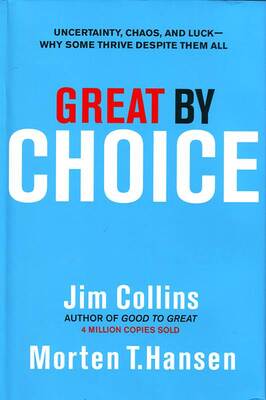
Great by choice is a book about research that answers the question: why do some companies thrive in uncertainty, even chaos, and others do not?
The book is based on research, has many examples and very engaging. It serves all of that with amazing structure including handy chapter summaries.
It is a bit too detailed to my liking in some places.
Below are my favourite highlights
Update: I read some criticism of Jim’s research and there are some very strong points. While his research methods might be good (there are enough criticism about it as well) the issue lies in a small pool of companies. Statistically it’s very easy to get false positive when you have only 20 companies to look at.
There are two videos which expand on the issue with such research - About p-hacking: https://www.youtube.com/watch?v=42QuXLucH3Q - And how data is random https://www.youtube.com/watch?v=1tSqSMOyNFE
The Four
by Scott Galloway
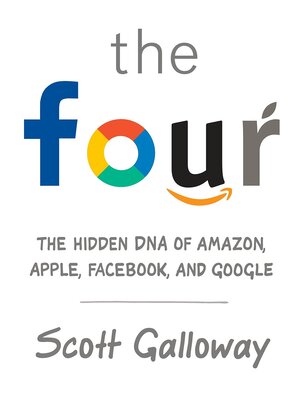
The book includes the short analysis of Amazon, Apple, Facebook, and Google along with future prediction. It was an interesting listen but I didn’t make any notes.
The Alchemist
by Paulo Coelho

Hah! I listened to this book a long time ago but seems like I didn’t blog back then. Luckly I decided to listen to it again.
I think it’s safe to call this book classic. It’s very popular and highly rated, while was written 30 years ago. It has great story, good character development and all of that is interweaved with life lessons. On top of that is fairly short, so I highly recommend it.
Хулиномика

This book gives a good introduction to ecomony basics. It quickly touches on a lot of concepts so don’t expect to get a good introduction. The author prioritises cool slang over explanation simplicity. This book is very entertaining indeed, but having the basic knowledge myself I found it had to follow.
Brave New Work
by Aaron Dignan
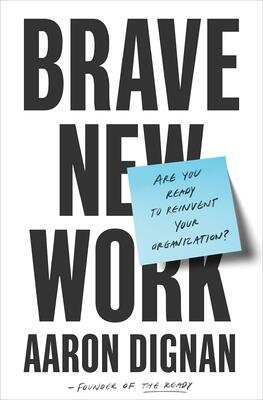
Overall this book is a good introduction into new way of working. It compiles a lot practices into place. It doesn’t go in depth but it shows you the direction you can explore yourself.
The key idea is to rethink how we interact and do work. It gives a new framework to think about the change. The book starts with establishing the ground work and introducing the new concept of Organisation debt.
Agile at Spotify
by Henrik Kniberg
Today I stumbled upon an interesting topic of culture in Spotify. Henrik Kniberg is main person who provided the insights to it.
It's all started in 2012 when Henrik wrote about it in Scaling Agile @ Spotify with Tribes, Squads, Chapters & Guilds. The organisation grew and changed since then, but I think it's valuable to see how the organisation evolved.
In 2014 two videos (one, two) were released providing a sweet short summary. I highly recommend them to watch.
Such a strong content and great delivery backed by successful company grew the popularity like a wild fire. There is an interesting post about the wrong adoption of the ideas. See There Is No Spotify Model for Scaling Agile
Rough Consensus
by Internet Engineering Task Force (IETF)
I'm very excited about Rough Consensus. Democracy is built around the majority. It works great when all voters are at the same high level of expertise. Unfortunately that can't be further away from reality. For example in voting: "Don't let ignorant people vote".
In practice nobody knows everything, so we should respect our differences. The core idea of Consensus: the lack of disagreement is more important than agreement. The focus on the flaws helps to drive the discussion and share the knowledge of the minority to the rest of the group. It's a way to pick the best option, and not the popular option.
I highly recommend to read the original paper: On Consensus and Humming in the IETF. It explains how to do it and the mistakes to avoid.
High Performance Habits
by Brendon Burchard
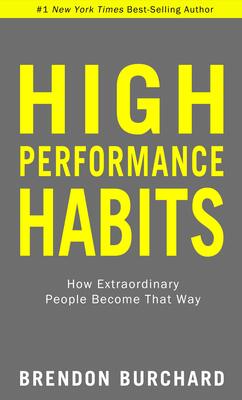
I like this book because it's practical. I also hate it in places because it feels like the book couldn't qualify as a best seller without completely unnecessary chapters. The book can be very useful if you can finish it.
First of all few words about the author. It's hard to respect Brendon when he is proud that he wrote a book in 1 month (not this book). Author who seeks success while openly claiming that good research is unnecessary. You will see that while reading it. Few chapters are written around author's personal stories and claims based on it. So yeah, who needs research?
The best part the book is very well structured and easy to follow. The content is weak in places, but there is nothing that conflicts with my personal experience, so it's easy for me to accept it even with weak arguments.
The book presents 6 habits and 3 common mistakes/traps.
Theory of Human Motivation
by A.H. Maslow
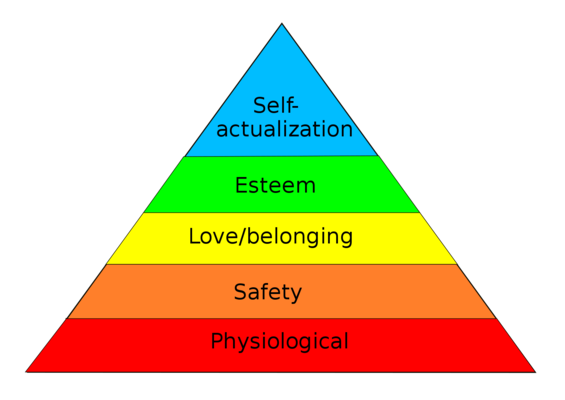
Everybody heard of Maslow's hierarchy of needs. I was curious to know more about it than what's in wikipedia so I read the original paper called "Theory of Human Motivation".
To remind you, the paper was written in 1943 and it's one of the best reads I've done. Modern books prioritise the high words count. The paper is opposite of that. It is very concise and full of references.
To my surprise only the first half of the paper talks about five levels. There are so much more to it! The second half argues that the hierarchy is not rigid. It was never meant to fit everybody and be 100% accurate. I think that's a very important part that got lost in the process of over-simplification to a single image of a triangle.
It was pleasing to see the author arguing both sides of the argument. The paper mentions the limitations of the proposed model, exceptions and areas for the further research.
Anything you want
by Derek Sivers

This is extremely dense book. It wins extra points for being concise. You can read it in hour or two. There is also audiobook read by the author.
I still can't make my mind about Derek. It's either he is genius and hiding it very well. Or he is the most naive and luckiest man. Either way read the book, it's worth it.
One thing really surprised me. Derek talks about completely different attitude of running a business. Every single business I know is there for one reason — money. You might think that's the best way to run the business. Sure, but it's definitely a survivorship bias. Money focused business might live longer but it's like a walking dead — it ruins the scenery.
It's rare to find customer focused business. Everybody says they focus on their customers. Yeah right, as long as their business is growing. Are your customers really interested in your business growth? I don't think so. They are interested in a great service/product. In fact larger companies tend to have worse service than their small competitors.
The author's mindset is similar to Basecamp. Focus on customers. You are not going to need it. Adjust as you go. No funding.
Quick notes:
I like his "HELL YEAH! or no" principle. I saw it many years ago and it got stuck with me for all that time.
Delegate or die: Answer the question and explain the thought process and philosophy behind the answer.
Trust, but verify: Remember it when delegating. You have to do both.
A real person, a lot like you: Technology depersonalises humans, but there are people on the other end, remember that.
Quote from Steve Blank: No plan survives first contact with customers.
You should feel pain. If you do you will always know what to improve.
If you like the book I would recommend to follow Derek's blog.
The Phoenix Project
by Gene Kim, Kevin Behr, George Spafford

This is a great technical story. I find it hard to explain my daily job to a non technical person. This book is the best example I've seen which closely resembles what the tech work is like. It's not the perfect match but the closest I've seen by far.
The story's realism keeps holding your attention till the end. The book is well paced and full of management lessons. Few highlights which I enjoyed:
"Free puppy" analogy. When what you think is free ends up costing you a lot over the years. I find people tend to favour short term thinking unfortunately.
Management of key resources and bottle necks at production factories and office jobs.
The book brings attentions to 4 types of work in tech teams:
- Business projects
- Internal projects
- Changes
- Unplanned work
And my final observation, just like in real life, managers in the book don't have formal management education.
The book focuses on the management aspect of work. I would recommend this book to experienced tech people, because they will appreciate it more. If you are outside of tech and want to get a glimpse into the daily lives of tech management jobs have a look as well.
Shape Up. Stop Running in Circles and Ship Work that Matters
by Ryan Singer

It is available online.
Shortly after I finished Inspired book Shape Up book came to my radar. After reading this book the whole puzzle got together. The pieces:
- 37 signals is a software company that develops Basecamp
- Basecamp is a project management and communication tool
- Basecamp is used by 37 signals to develop Basecamp
This book serves well as a guide on how to use Basecamp. The closer your process is to this book, the more useful Basecamp will be for you.
It’s important to note that Basecamp is a cash-cow. The quality of the development process is not necessary affects its success. Read the book with a grain of salt.
Their process is also Dual Track. The first stage is exploration and the second is development. However unlike in Inspired, it’s not clear if they ever do user testing. The book is very practical and it’s easy to see that it evolved over time.
I find Shape Up process very reactive as they discourage having backlog. I agree with the principle that important ideas will always come back, so you don’t need to record them. However they went to the extreme to reinvent the road map every 2 months. Basecamp doesn’t feel like a product but a playground for its founders.
I think the book will gain popularity because it’s short and free. It would serve as a good introduction to dual track processes. I will recommended it on this basis to others.
Inspired: how to create products customers love
by Marty Cagan
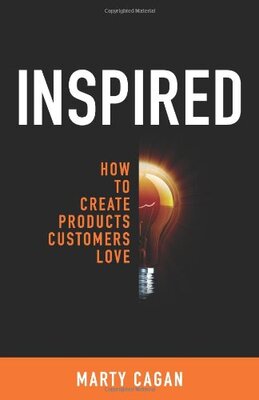
My friend is a big fan of Marty Cagan. He is so impressed by his work that it made me think I’m missing out, so I’ve decided to read it. Inspired is a book for product managers about product managers by product managers.
Let’s start with important things first. I loved it. My career is a decade old and I was surprised how little I knew about product development. This book taught me a lot. What product managers are, what they are not, what they do, how to hire and how to work with them. It’s probably the most comprehensive book on a single topic.
The mind blowing discovery for my was at the end. The author is highlighting through the book about the difference between normal agile coach and the one who worked in product team. It’s only at the end of the book he explains the difference. Scrum as the most popular agile methodology is created in consulting (custom software in the book). It works amazingly well in such setup and it is completely unsuitable for product teams. I knew it myself deep inside, but verbalising it made it real. I like agile manifesto. With that the new knowledge 12 principles behind the Agile Manifesto opened up from a completely new perspective.
Our highest priority is to satisfy the customer through early and continuous delivery of valuable software.
It’s great for consultants, pointless for product teams.
The process the author proposes is something between waterfall and agile. In short you don’t develop anything until you’ve proven the prototype and business model. I was very skeptical at the start but finally got convinced that it is a good process to use. The book does not give it a name, but people call it Dual Track Development.
On the first track you explore ideas, come up with prototypes and test them on users. The idea is to keep the feedback loop tight and iterate on ideas. On this track all roles must be involved, including developers. That avoid the problem with waterfall model where levels don’t communicate.
The second track is usual development process. That could be Scrum, Kanban or chaos driven development.
Both tracks run in parallel, but with different cycles.
If you test an idea and it fails, you just scrap it and move to the next. The BIG difference to plain agile you don’t pollute your code base with bad ideas. Also when you start development you already have well designed, tested and proven feature. No more assumptions and no more pivoting.
Even though the book is mostly for product managers, I found it very useful, so would recommend it to everybody who is in software development.
Atlas Shrugged
by Ayn Rand
This is a second time I listened this book. It wasn't a standard audiobook, but audio theatre with multiple voices and sound effects.
I enjoyed it like the first time, but also picked up the bits that I missed before. That allowed me to enjoy the book even more.
I better understood the characters and the love narrative. My original critic is only partially relevant now. Turns out I didn't get it the first time.
This time I spent more time researching the Objectivism, which is the main philosophy in the book. I found that hard to navigate and differentiate philosophical terms. It's like learning chemical elements without periodic table. Would be great to get some framework for different philosophies.
Peopleware
by Tom DeMarco & Timothy Lister

I love the title of this book, it can't be said better. The book was release in 1987 and had its third edition in 2013. The content is still relevant to this day, but sometimes it feels dated.
This is a great book, but I'd say hold off from reading it until you get into managing people. Then this book becomes invaluable resource. It describes the work dynamics from the social perspective and even touches on a big topic like happiness in life.
The book confirmed and cleared a lot of my observations. My three highlights:
Software quality is a cult. Not striving for the best is the common mistakes most companies do. It's not just cutting corners but has an enormous psychological consequences. One of them is job satisfaction. By pushing dev speed over quality you rip the most important part for developers, to be proud of the craft. You might say the speed to market is the king. Sure, but don't be surprised when developers resign.
Hidden hiring costs. It's not so hidden, just ignored. Based on my estimates it costs 50k to hire new candidate. The average employment duration is 2 years. It means you pay 25k per year per hire. It's ironic when company wants to save 5k and not to match the salary offer of the resigning employee. People overvalue simple numbers and ignore more complex ones. The short story, value your people while you have them, otherwise you will pay for it. Even if you spend 20k in perks per employee per year, you should celebrate your decision. It made your employee happier and you saved 5k.
I also enjoyed the chapter on introducing change to organisations. I was burnt in the past when I wanted to improve things. I leant the lesson: people really hate to change. The chapter shows a technique to ease the transformation. Each change needs a catalyst. You need to show and convince the people that the status quo is wrong. The catalyst should create the chaos, the bigger — the better. Only after the people are scared enough you can introduce your idea as a solution to the chaos.
The book sounds too good to be true, but I like the reasoning. I wish it had more to back it up, to build my confidence in the content. But as mentioned above, this book is highly recommended.
The Barefoot Investor
by Scott Pape

I'm pretty good with money (at least I'd like to think that). However I lack a lot of common knowledge about Australian rules. For example how super works or what happens when your bank goes bankrupt. This book is mostly relevant to only Australians, as financial system differs in each country.
The book present a simple step by step guide on how to take your financial life under control. Starting from the bottom of owning a lot of debt up to getting the financial independence. This book is recent which is important as the content is time relevant.
The books proves a good general knowledge and a must read for all Australians.
Tribal Leadership
by Dave Logan, John King & Halee Fischer-Wright
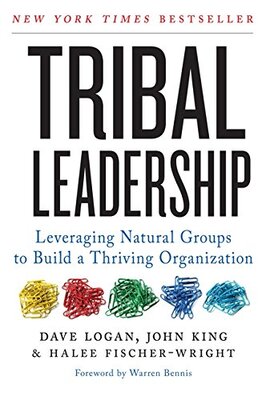
Great book! It talks about tribe (group of people) culture. It's mostly described in the context of work organizations. The book is inline with my own experience. I saw it as the explanation of the things I didn't see at the time.
The content is very well structured and to the point. It has a good balance between stories and actionable steps.
You can download free audiobook. You'll need to go through 5 pages to get the file, but it's worth it.
If you've achieved competence in your career, this book is a must read for you.
I will read the book the second time to better understand it. One audiobook wasn't enough to fully appreciate the insights.
Measure What Matters
by John Doerr
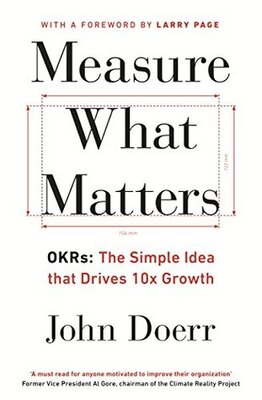
I do not recommend this book. The book brags about success stories. If at least one employee heard of OKRs, the author would claim the company's success solely to OKRs. This book takes survivorship bias to the extreme. What this book does not talk is how the mentioned companies, including OKR mother-ship Google, constantly fail. You might assume those teams didn't implement OKRs correctly. However the book does not tell you the correct way and you have to figure out it for yourself.
Without that, it's a pigeon superstition:
However I would recommend the resources at the end of the book.
Don't get me wrong, the topic of goal setting and uniting teams is very important. OKR is a fancy word for the goal setting and it creates more confusion. Without understanding of OKR implementation details it's too easy to fall into cargo culting.
Tribes: We Need You to Lead Us
by Seth Godin

It's a weak book. The author's style of writing doesn't help either. The continuity breaks, thoughts jump and the lack of structure make it hard to build the understanding.
There are few good quotes and thoughts, but unless you are into group psychology, don't waste your time. The only reason to read this book is for completeness on the topic and to see the different perspectives.
Macbook Pro 2018 degraded performance under load
The shady Apple practices
Recently I've started using external 4K monitor with my Macbook Pro. I was shocked to discover that the laptop is running 30% slower. That's right it's slower by third.
I've got one of the most powerful Macbooks you could buy at 2018 with i9 processor (2.9GHz with 6 Cores), 32GB RAM and Radeon Pro 560X. However that does not matter because the power is throttled. You might remember the throttling story when the laptop was released. It is almost the same now after the fix.
For example, my test suite takes 1m40s to run without external monitor. However with the external monitor it takes 2m10s. That's a big jump.
The dip - A little book that teaches you when to quit (and when to stick)
by Seth Godin

That's a last book for the year. It's very short and has a very clear message. The title says it all. I love it a lot. However I'm biased as my opinion is inline with the book.
I've discovered that the book splits people into two opposite sides. The question is simple, so I've found everybody have an answer for it. Do you think you should be the best in what you do?
I would recommend this book, does not matter what your answer is. It's worth 1-2 hours reading.
The power of habit
by Charles Duhigg
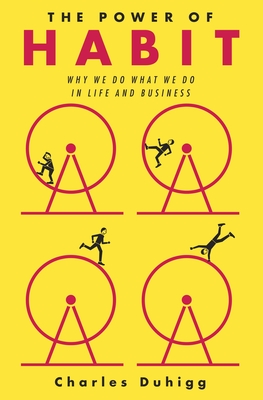
I'm a big believer in habits and picked this book specifically for this reason. The book has three parts: individuals, organizations and society.
The individuals part is the best. It explains the habits in a structured form. There are a lot of insights and knowledge that you can apply yourself.
In the second part that the book starts to go down hill and it goes fast. There a lot of interesting stories, but no analysis. It is the same problem as Charles' another book Smarter Faster Better, which I've read few months earlier. Entertaining to read - useless in building understanding. Most stories have too many unnecessary details. Chapters are hard to relate among themselves and the book lacks purpose. It's very disappointing, but fun at the same time.
"Habit" is a big word for this book, which it does not deserve. More accurate name would be "Stories about influencing people".
I would recommend to read the first part about individuals. You can skip or skim the rest.
How to setup a beach tent

UV index is very harsh in Australia. While 11 index is considered Extreme, it's often you'll see 13 in Melbourne. Thus I bought a beach tent.
I checked all of the available resources on how to set it up and still miserably failed to do it myself. It's almost always windy on the beach. During the setup the tent cover becomes a huge wind sail and it's a challenge to secure it with ropes before it flies away.
As a result I came up with new way to set it up.
The bed of procrustes
by Nassim Nicholas Taleb

That's my beach book and it's a great fit. Short aphorisms are quick to read and give you a lot of opportunity to think about them. I didn't understand the half of the aphorisms, which gives a reason to read the book again.
Domain-driver design distilled
by Vaughn Vernon

I've found this book very insightful. It talks about modeling the application based on domain or real business terms and operations. My development experience slowly led me to the same conclusion. DDD is very valuable technique and it should be more talked in the software industry.
I can't remember seeing the DDD concept in the book yet. While the book's content is great, the delivery is horrible. I found it to have a bad flow, being too long and slow at times and often confusing. The more appropriate title would be "DDD Half-Distilled". I feel the content could be cut in half without significant drop in value.
Handbook for new employees
by Valve

I've picked this book for the second book club meeting. It is short and publicly available. The book provides interesting insight into the company, which is successfully operating with flat structure for 20 years. It's so different so it's hard to believe it.
The most surprising part for me was about hiring as it is considered the most important task in the company. I agree with such approach, but unfortunately it's not so common.
Few other things I've liked: T-shape people, peer reviews, cabals, stack ranking and compensation.
The book gives a good overview of the culture. I really want to know more details how everything is setup. That's where the real insight.
Reading RubyWeekly. Next level achieved!
(With a bonus)
RubyWeekly is a weekly email with curated list of links about Ruby. It might take me few hours to read through it if the content is interesting. It’s hard to find 2 hours of focus time. It would be nice if I could track each link in the newsletter separately.
This blog post describes my evolving solution and how you can optimise your workflow and read RubyWeekly with one click.
Scrum: The Art of Doing Twice the Work in Half the Time
by Jeff Sutherland

Great books and great methodology. It would be even better if the author didn’t oversell it. The way he presents it, is like he treated all diseases on the planet. After a while of such praising of his work you start to question his credibility.
The author made a good point. You can't significantly change the performance of a person in a short time. However you can significantly affect the team. Everything should be seen as a system. People are just the participants in the game.
There are no bad people, but bad systems
The book made me think of Nazism. Its success can be explained by the system that was in place. Most german people didn't want to kill anyone on the individual level. However they played their cog role in the complex Nazism machine.
Anyway, back to the book. Scrum is focused on providing the basic rules for the process in the team. It prioritises efficiency, uncertainty and change. I can't think how those rules could be distilled even more. That make me think the scrum would be around for a long time.
I would recommend this book to everybody. But don’t be put off by the writer. The product does not change because of the bad salesperson.
Smarter Faster Better
by Charles Duhigg
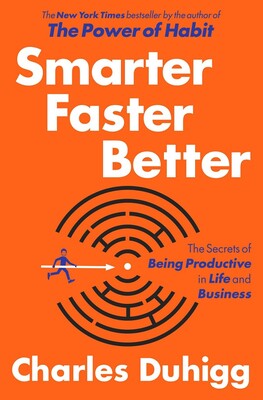
This was an audiobook, and I did an experiment with it. I’ve listened to this book three times in a row. The goal was to see how the second and the third rounds would be different.
After the first round, I liked the book. Each point is backed by real life example. That makes the listening a joy.
The second round wasn’t much different. I’ve picked up some missed details. However overall understanding of the book is only improved by 10%.
For the last round I created a mind map while listening to it. To my surprise that made a huge difference. The mind map forced me to become an active listener. The overall understanding doubled. That shocked me because that was the third time I’ve listened to it.
My favorite part is about goal setting. There are ‘smart goals’ and ‘stretch goals’. Smart goals are achievable and measurable. These are your everyday goals. They prioritise efficiency of what you are already doing. In contrast stretch goals are about the direction.
To better understand them, think of the running analogy. Smart - is how fast you are running. Stretch - is where you are running to.
While the book has a great content, it feels disjointed. It would be nice to combine all knowledge into a recipe to follow. I guess it’s up to the reader to do so.